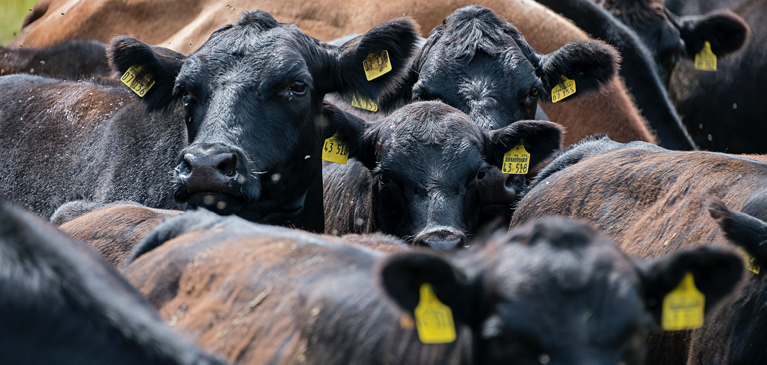
While the three-year drought out West is easing, its impact will continue to be felt by many cattle farmers and ranchers who sacrificed genetics and dipped into equity to endure. The good news – better margins are likely ahead.
USDA’s Semi-Annual Cattle Inventory report released the end of January confirmed what many had suspected. All cattle and calves were at 89.3 million head, the lowest in eight years, meaning prices and profitability will favor cattle producers in 2023. It is 3% below the 92.1 million head on January 1, 2022.
The cattle industry is entering 2023 with a small cattle supply as drought caused the industry to dig deeper into the supply of feeder cattle and calves.
The beef cow herd was at 28.9 million, near record low, and is projected to contract, with a forecast of about a 5% drop in production this year compared to last year.
“Cow numbers have been coming down because there was no grass to feed them, corn is expensive and hay is hard to find,” says Brad Hibbert, vice president of capital markets lending. “Last year was one of the biggest years for processors as far as volume goes, but they expect that to come down this year, which should force cow calf prices up because there are fewer animals.”
Some regions continue to struggle with drought, especially southwest Kansas in parts of the Panhandle, but other parts of the country have seen a lot of improvement in precipitation. A lot of the southeast Central Plains and Corn Belt are no longer considered to be under drought. A lot of improvement has been seen in the West, as well.
“With a large percentage of the cow herd residing in these regions, this is supportive to slowing the liquidation of the cow herd, especially as pasture conditions improve,” reports Mary Kurzweil, analyst at CattleFax. “This is starting to be seen with less beef cow slaughter. The mid-February beef cow slaughter is down 35,000 head or 6.6% from a year ago, but this does still put us above the 5-year average and with a smaller cow herd to begin this year. That does not turn the tide away from liquidation, as the other side of slowing liquidation and moving into expansion is attaining heifers. So far, the data suggests that we have not reached this point yet.”
The supply of beef will tighten. “I think the prices will remain strong, especially because consumers have changed quite a bit through COVID, with more people switching to home cooking,” Hibbert says. “So, for the better cuts, choice and prime, there is high demand. And that's what is really driving price points with those more premium cuts of beef. But, with a smaller cow herd, processing numbers will be down.”
In Michigan, all cattle and calves were 1.12 million in 2022 and were down 2% in 2023 with a total of 1.1 million.
In Wisconsin, those numbers were 3.5 million in 2022 and down 3% this year to 3.4 million.
Kevin Good, vice president of industry relations and analysis at CattleFax, reported that U.S. beef cow cattle inventories have already fallen 1.5 million head from cycle highs. The 2023 beef cow herd is expected to be down about another million head to nearly 29.2 million.
“The drought is expected to lift in the latter part of this year and when grass begins to grow again, people will start restocking their herds with replacements,” Hibbert says.
Inflation, rising interest rates and general economic uncertainty will continue to impact consumer purchasing decisions as many look to limit spending.
Inflation reached a 40-year high in 2022, triggering the U.S. Federal Reserve to raise interest rates seven times last year with intentions for further rate increases until inflation falls. Most economists calling for a mild recession in the second half of the year.


